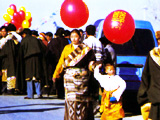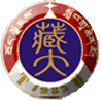Tibet Major Events & FestivalsTibet not only celebrates the major Chinese holidays, but is also host to its own unique and exciting holidays such as the Bathing Festival, the Prayer Festival, and much more.Tibetan festival culture is an important component of Tibetan folkloric culture, ancient culture and religious culture.Tibetan festivals have multiple origins and qualities.
On the New Year Eve, every family will present all kinds of foods in front of Buddha images and keep busy preparing deep into the night, so that there will be plentiful food during the holiday.On the first day of the Tibetan New Year (first day of lunar calendar), the first thing Tibetans must do is send one family member to take a barrel of water home from the river, the first barrel of water in the new year is called auspicious water. From the second day, relatives and friends begin to visit each other and celebrate the New Year, which will lasts 3 to 5 days.During the festival, people will play Guozhang or Guoxie dance at the squares or open grasslands with the accompaniment of guitars, cymbals, gongs and other musical instruments.Hand in hand, arm in arm, Tibetans dance in a circle while singing following the rhythm by stamping their feet.Children, on the other hand, will fire firecrackers.A happy, harmony and auspicious festival atmosphere will pervade the whole area.
The Ox Festival derives from Tibetans' awareness of the importance of the ox in agriculture.During their daily labor, they gradually produced strong feeling to the ox, and consequently, numerous phenomena of the ox culture came into being. The ox was regarded as god and became the best sacrifice for divinities.So then the Ox Festival finally emerged.It starts from the 15th day of the 8th month in Tibetan year and usually lasts more than 10 days or even one month sometimes, with generally more than 1,000 people. During this process, people will ask "heiba" (wizard) to recite scriptures, play yak horn and kill tens of yaks or over 100 sheep, drinking freely and talking noisily.In the past, because of the high expenses, this large sized fair was held only once every one hundred years.Moreover, members who take part in Ox Festival share the same blood relationship.So, it is placed among the cultural festivals of ancestors worship.
The Great Prayer Festival falls on the fourth up to the eleventh day of the first Tibetan month.It is the grandest religious festival in Tibet.Monks of Dreprang Monastery, Sera Monastery and Gaden Monastery will assemble in Jokhang Monastery for the occasion. This festival dates back to 1049 when Tsong Khapa, the founder of the Gelu sect, held a praying ceremony in Lhasa.Examinations taking form of sutra debates for the Geshe degree, the highest degree in Buddhist theology, were also held.Pilgrims from other places in Tibet crowded to listen to the sermons while others give religious donations.After that, it is continuously enlarged and enriched, becoming a fixed and popular religious festival and lasting until today, with a larger size than ever before.
The grand Butter Lamp Festival falls on the 15th day of the first Tibetan month, the last day of Great Prayer Festival.In the daytime, people will go to monasteries to worship Buddhas and pray.At night, a lamp festival will be held on the Barkhor Street in Lhasa, where there will be lots of shelves filled with colorful and various images such as gods, figures, birds, animals, flowers and trees.Meanwhile, you can also enjoy the puppet show.Thousands of lamps just like the shining stars falling from the sky, which takes on a splendid look.
Buddha's Birth, Death and Enlightenmen Festival, also known as the Saka Dawa Festival, held on the 15th day of the fourth month in the Tibetan calendar is a day to celebrate the day when the Sakyamuni was born, achieved nirvana and passed away.It is also a traditional festival for Tibetan people. April in Tibetan calendar is Buddha Month, so it is called "Saka Dawa" in Tibetan.On this day, in accordance with their conventions, Tibetans will dress themselves in their holiday best and assemble at the Dragon King Pool behind the magnificent Potala Palace to celebrate this grand religious festival. After long period of development, it gradually evolves into a mass festival for Tibetans to visit parks in spring and summer and pray for a good harvest in agriculture and animal husbandry.During this festival, some people set up colorful tents; some prepare barley wine and butter tea, families resting beside the pool with great joy.Then young Tibetans dance in a circle while singing following the rhythm by stamping their feet.
The Bathing Festival falls in the first ten days of the 7th month in Tibetan calendar.Tibetans believe July is the best time for bathing as a religious ceremony.As a conventional festival in Tibet, it has a long history of seven or eight hundred years at least.
The Yoghurt Festival is one of grandest festivals in Tibet."Shoton"
means yoghurt in Tibetan.The origin of the festival started from the
17th century.According to the rule of Gelu sect of Tibetan Buddhism,
the 6th month in Tibetan calendar was the retreat period when monks
and nuns of all monasteries were prohibited from going out to avoid
stamping on or hurting little bugs. During the festival, Tibetans, no matter male or female, old or young, will pour into Norbulingka Summer Palace in knots, with colorful bags on back and barley wine barrels in hand.Some will set up tents, put carpet on the ground, and lay out barley wine, dishes and other holiday foods. Horseracing is a favorite activity for Tibetans.It not only provides a good place to assemble and exchange experience in agriculture and animal husbandry in spare time, but also shows the spirit of Tibetans.Consequently, horse racing has become an indispensable activity in almost all the Tibetan festivals, including the Yoghurt Festival, that are handed down and spread among the people.
The Ongkor Festival is a festival for Tibetans to celebrate agricultural harvest once a year."Ong" refers to field in Tibetan and "kor" means rotating.So, "ongkor" is a transliteration, meaning walking round the field. The Ongkor Festival is observed only in farming villages, especially in the countries in middle reaches of Yarlung Tsangpo and the ones besides Lhasa River.It also appears in other places with different names, however.For instance, it is called "Yaji" (meaning comfortable summer in Tibetan) in Lhatse and Tingri. On the day, Tibetans will always dress themselves in holiday best and walk around their fields, some carrying colorful flags, some lifting barley and harvest pagoda made of ear of wheat with white hada hanging around, some beating drums and gongs, singing songs and Tibetan operas, some holding the portrait of Chairman Mao. After that, people will set up tents and take barley wines, drinking cheerfully when chatting freely.Moreover, they will also hold traditional activities and contests such as horse racing, yak racing, riding to pick up hada, singing and dancing contest and Tibetan opera contest.
Secular public holidays, when banks and government offices are closed, are few and many shops remain open even on these days.The following are official Chinese holidays:
Based on the Tibetan Lunar Calendar:
|

 The establishment of Tibetan New Year has close relationship
with usage of Tibetan calendar, which can date back to more than
950 years ago.From then on, it became a survival of the past.Tibetans start preparing for New Year Holiday in Dec of Tibetan
calendar.During the process, whole families will infuse barley
seeds in basins.
The establishment of Tibetan New Year has close relationship
with usage of Tibetan calendar, which can date back to more than
950 years ago.From then on, it became a survival of the past.Tibetans start preparing for New Year Holiday in Dec of Tibetan
calendar.During the process, whole families will infuse barley
seeds in basins.